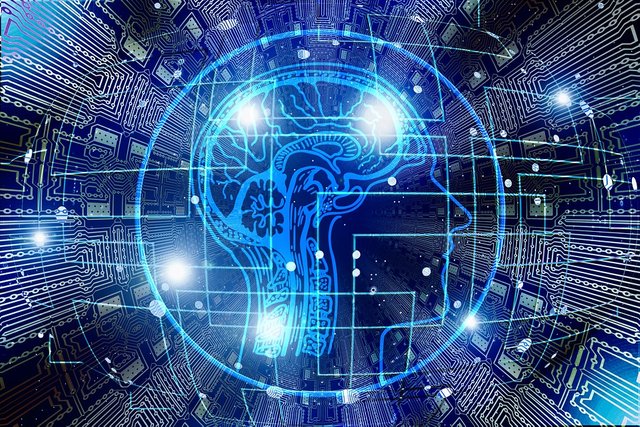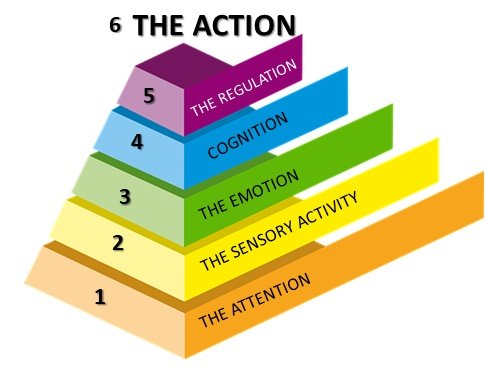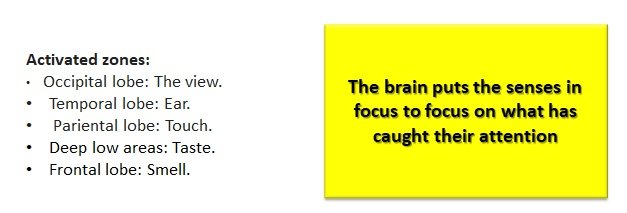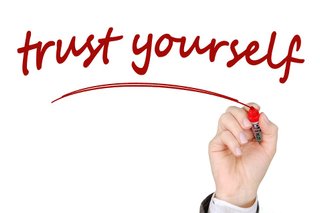Application of the model of the Neuro-pyramid of Romano (NPR) in university students with the intention of verifying their mental processes and subsequent learning. Part I

Source CCO

Introduction
One of the exciting challenges of a teacher with a vocation is to understand how the learning process occurs within the minds of our students and when we speak of "mind" I mean all the processes generated within the human brain. In my opinion, the generation of knowledge and the way it is perceived is an individual, circumstantial event that changes as the generations evolve.
In this case, the main objective is to apply a model created by the Mexican Jaime Romano, doctor in neurophysiology, who merged the knowledge about neuroscience and marketing, originating a new concept "Neuromarketing".
The purposes on this occasion are purely pedagogical, as they will adapt to the teaching of any subject with the purpose of demonstrating how the learning process occurs in any group of students, that is what this first part is about, adapting a model used to understand the decision-making linked to the purchase of a product with the decision-making of a student when it comes to learning What elements motivate or discourage him? Why do you decide to learn or why not? How does the domain of this model affect the decision-making linked to wanting to capture knowledge? What is the contribution of a teacher in this learning process? Or any other question that may arise in the development of this investigation.

But! What is the Neuro pyramid of Romano?
The Neuropyramid is an innovative and avant-garde model that explains the sequence of mental events that take place since our brain receives a stimulus through the senses until it becomes action (buying behavior) through all the stages of sensory processing, emotional and cognitive. Source
Although Jaime Romano created the Neuropirámide to explain the final decision making of a buyer, respecting the emotional element involved in the whole process, my intention is to adapt this model in the educational area in order to change favorably the final decision of the student.
The Neuropirámide is constituted by 6 steps, perfectly identified as:

Image of Pyramid without copyright and modified in Power Point for the purposes of this investigation. The mention of the page is also made Soutce Pixabay
How do they explain each of the levels that make up the Neuropyramid?
Level I = The Attention
At this level all kinds of information reaches us in a single moment and we can capture them through the senses, however we focus on a single stimulus, ignoring the rest.

Adaptation of this level of the pyramid to this investigation:
When analyzing this first level of the pyramid and seeking to adapt them for purely educational purposes, I thought it necessary to ask myself the following question: * How do I get the attention of the students? *
Calling the attention of a student is achieved from the first moment in which visual contact is made, therefore certain tools offered by Neurolinguistic Programming must be considered, such as:
• The Rapport
• The Pacing
These two elements strengthen each other, it means that for there to be an "effective Rapport" there must be a "Pacing". So? What is each one about?

let's say it is associated with the approach (not necessarily physical) but rather in the feedback you can get to consider: the tone of voice, posture, body language, etc.
[concept created by the author of the post]
Needless to say then, that this skill will allow the teacher to effectively transmit the information, verifying this by checking on their students these elements described above, that is, you become aware of the tone of voice you use, body language and check the response of acceptance or not when evaluating these details in them.
Level II: Sensory Activation
The information received through the senses is processed in the cerebral cortex, this is known as "Perceptual Sensory Processes".

Adaptation of this level of the pyramid to this investigation:
When the senses are considered for the acquisition of knowledge, must be used strategies to reach the different students, because we will be clear! everyone has their way of learning and for this reason we consider it important to use teaching and assessment strategies based on the representation systems offered by NLP.

For this reason, there is to considerthe use of:
• The class blackboard (but highlighting the use of markers of different colors).
• The use of audiovisual tools.
• Dissertations, debates and exhibitions.
• Dramatizations
• Construction of prototypes, development of models, construction of cases (this will vary depending on the career being studied).
In the same way, should be expanded forms of evaluation of the topics that are explained, teachers should go a little beyond the typical multigrafiados exams, the dreadful interrogations or the trilladas exhibitions where the student is only limited to studying the part that corresponds to him. Similarly, you can apply tests at the beginning of the course to have the certainty of the senses that students use the most when learning.
Level III: The Emotion
The "Limbic System" is in charge of this stage, one of the deepest parts of the brain and is responsible for the emotional life of the human being. Here the states of "Pleasure" or Not-placer" occur which will subsequently manifest physically.
Two types of attention are derived: The intuitive and the associative.

Adaptation of this level of the pyramid to this investigation:
I consider that the third step of the Neuro-pyramid of Romano is a crucial point to reach the last step successfully. Especially since the learning process takes place from the emotions or, on the contrary, the refusal to learn something, which means that the teacher must be aware of evoking sensations such as: motivation, empathy, value to achievement, recognition, evaluation, so that the decision making of the student is aimed at the interest to learn.
To better exemplify the impact of emotions on the learning process we can place ourselves at the dreaded moment when we were approached by an intimidating teacher, who more than make sure that we master a subject seeks to ridicule us to ask us gimmicky questions
Level IV: Cognition
We can talk about a more complex thought, since information is analyzed and synthesized.

Adaptation of this step of the pyramid to this research
Cognition is a fairly common concept in education, precisely because it is associated with "the knowledge or understanding you have in a particular area or subject" What would be the difference now?
The great difference would be the means or elements that we have considered previously for it to occur, which we synthesized until now:
A first moment where we capture the attention of students, then the coverage that is made of the most significant systems of representation in our students adapting for this the teaching-learning strategies and the generation of pleasant sensations to make the learning process a satisfactory adventure.

Many times we know that a student is good, participative, cordial and concerned and at the time of presenting an evaluation he went through a personal problem that took him away from his concentration, it could also be the case of having a disease What could we do in these cases? Well corroborate that you have mastered the subject and this can be achieved by evaluating it gradually and not only by means of a single test, even the participation and the feeb-back that is believed at the moment of explaining the subject can give us an idea of how much our students have understood.
The Level V: Regulator
Here the behavior is monitored, adjusted and guided in the most appropriate and stable way possible, which is focused on a possible gain.

Adaptation of this step of the pyramid to this research
For a teacher the "regulation of the action" is measured not only through the qualifications, these are a precise element to ponder a subject to be evaluated and therefore give an average of the result obtained, but can not be taken as a single variant in the learning process, because indeed "The Action" would be measured by the degree of knowledge reached by the subject participant.
That said, the association and implementation of the knowledge reached to the reality will mark a great significance to the process of regulation of the action, that is why the teacher must first offer a substantial introduction to the subject that is intended to teach, explaining to the student how This knowledge will serve you in your professional life and giving you the necessary sense to capture your attention.
My teaching experience has taught me that most students understand as the ultimate goal "the achievement of a grade" (this is their priority), for this reason, while explaining the class I try to take moments for them to identify the possible questions of the exam , this powerfully draws your attention, at that moment I try to begin to question the why of the questions, because they must master that part of the topic and what repercussion this will have on their personal life (as future graduates).
Level VI: The Action
Once the process is concreted, having sensitively and cognitively processed the information through the different brain areas, it is deliberated by moving to the act as such, making movements or speaking.

Adaptation of this step of the pyramid to this research

Imagine for a moment that teachers are trained to stimulate and encourage the student's subconscious and welcome the emotional factor in the classroom.Would we have more motivated students to learn? Would the academic result be more favorable? Would the teaching process be less rigid and inflexible?
Each of these questions will be revealed in the next part of this post

I want to end with the following thought, associated with the Neuro-pyramids of Romano:
"If consumers receive new messages their mental processes will change and consequently their actions will. By acquiring new knowledge that truly produces new learning, new feelings, ideas and behaviors associated with them will necessarily arise".Source

Preliminary conclusions:
- The Neuro Pyramid of Romano is perfectly adaptable to the teaching-learning process.
- Each of the steps of the Neuropyramid can draw on other studies that other authors have drawn up, such as Neurolinguistic programming.
- The attention that is achieved with a student begins from the same moment that the teacher presents his classroom, for this the importance of achieving a "good first impression" and offer the subject as a fundamental part of his career university
- The application of this model obeys to the identification of the participant's individualities, this in order to plan and create the best teaching and evaluation strategies during the academic period.
- The "Emotion" plays a fundamental role in obtaining knowledge, therefore teachers are guarantors of creating a harmonious environment where the student sees that he can strengthen their weaknesses and enhance their skills.
- The conclusive "Action" must be the obtaining of knowledge, this must be paramount, this is a theory that must be internalized so much by the student that he does not give importance to what little he knows in order to obtain a good qualification as for the teacher who only takes the result of a test (grade) to know his student.
- At the same time that students stop seeing "the grade" as the ultimate goal of education and worry more about learning, they will be able to obtain better academic results.
- The avant-garde teacher must update and adapt new models in order to improve the quality of learning of their students.
- Decisions are made subconsciously in daily life but in education teachers can encourage it to take the learning process.
Bibliographic references:
- Montes Zoraida (1997). Beyond Education. Editorial Galac.
- Alder Harry and Heather Beryl. (2005). NLP in just 21 days. Editorial EDAF, S.A
- Visconti Sandra. Monograph Teaching Training Course in Neurosciences. Sandra Leticia Visconti. Available at: http://www.asociacioneducar.com/monografias-docente-neurociencias/monografia-neurociencias-sandra.visconti.pdf
- Neuromarketing. (2016). Hup University. Available at: http://hup.com.es/docs/formacion/2016/01-neuromarketing.pdf
- The Universal, MX (2012). Interview with Jaime Romano. Neuropyramid, base of neuromarketing. Available at: http://foros.eluniversal.com.mx/entrevistas/detalles/25387.html
- Carrillo (2017). Neuro-Pyramid of Romano - Base of Neuromarketing. Available at: https://www.mercadotecniatotal.com/mercadotecnia/neuropiramide-de-romano/
- How does our brain act in the decision to purchase? (2016) Hup University. Available at: http://hup.com.es/docs/formacion/2016/03-neuromarketing.pdf
- Ros Ricardo (2015). Rapport (pacing). Available at: http://www.pnlnet.com/rapport-acompasamiento/
- NeuroMarketing (2005). Step 6 of the Neuropyramid. Available at: https://neuromarketing.org.mx/
Resources Employees:
• Note diary
•Markers
• Ballpoint pen, highlighters
Digital equipment and software:
• Samsung computer
• Microsoft Power Point </ div>
Reference of Images extracted from the Pixabay Source:
- Keyword: Artificial intelligence
https://pixabay.com/es/inteligencia-artificial-cerebro-3382514/ - Keyword: Pyramid
https://pixabay.com/es/pir%C3%A1mide-gr%C3%A1fico-colores-infograf%C3%ADa-2611048/ - Keyword: Important
https://pixabay.com/es/importante-l%C3%A1piz-de-color-pluma-2794684/ - Keyword: Senses/Trust
https://pixabay.com/es/confianza-confianza-en-s%C3%AD-mismo-440224/ - Keyword: Cranium
https://pixabay.com/es/humana-masculina-perfil-hombre-a-2099157/ - Keyword: Graduation
https://pixabay.com/es/graduado-graduaci%C3%B3n-la-escuela-150374/

Hola, solo venimos a avisar que en este buen post estamos de fiesta porque...
Such a good post Sandra ;D
Thank you very much!!!
Congratulations! Your post has been selected as a daily Steemit truffle! It is listed on rank 9 of all contributions awarded today. You can find the TOP DAILY TRUFFLE PICKS HERE.
I upvoted your contribution because to my mind your post is at least 25 SBD worth and should receive 143 votes. It's now up to the lovely Steemit community to make this come true.
I am
TrufflePig, an Artificial Intelligence Bot that helps minnows and content curators using Machine Learning. If you are curious how I select content, you can find an explanation here!Have a nice day and sincerely yours,

TrufflePigOhhhh!!!! Excelent
Thank you, thank you and thank you!!